Even so, we were amazed by the designs produced by Australian companey Elkei Education, so we had to speak to Elkei’s CTO, Steph Piper.
“Elkei began as an idea for a startup competition weekend. The idea of these is that makerspaces let people go and do entrepreneurship activities; you can hire a desk and work on your own business ideas. They often host competitions where you can go and pitch the bare wisp of an idea. You say to everyone. You form teams all around the idea, and work on it over the weekend until you pitch the idea to a panel of judges.
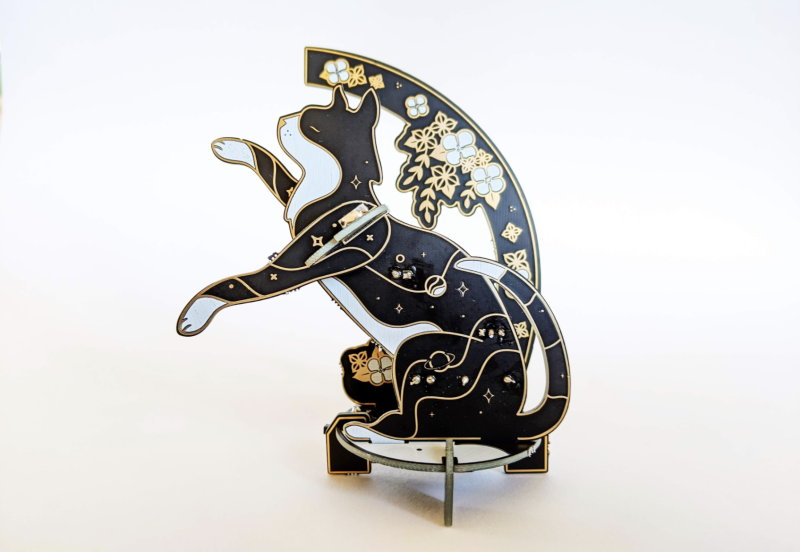
“So I pitched the idea of electronics for girls, without having much idea about circuit boards or anything like that. That’s where I met my business partner Andrea [Madden]; she’s fantastic. She’s the marketing and social media expert, which is great because I’m not very good at that stuff. We ended up winning that weekend and we got to go to the international finals, which were in Bali, Indonesia. We got to go and pitch again against a bunch of other teams from Malaysia, Japan, Brunei, all kinds of places. And we ended up winning that as well. So we thought, wow – maybe this idea has got legs.
“We started off with a bunch of different ideas, and at that point I hadn’t actually designed a circuit board before. We footered around with a bunch of different stuff, until I sat down and did like a marathon of YouTube tutorials and figured out circuit board design.
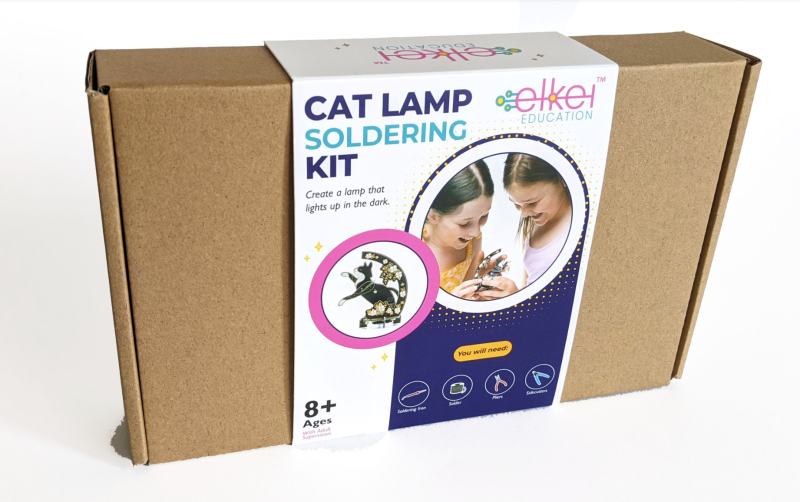
“We pivoted quite a few times before we landed on starting more organically, and starting small with the soldering kits. And in August 2019, we ended up travelling to China. We found a factory that would do the two colours on the board for us, which is pretty wild to think about now – we were originally planning to go over there for the Maker Faire in November, which would have been impossible when Covid came along, because that’s when it all started to happen.
“We ended up travelling to a circuit board exhibition in China as part of our trip. We went through there and spoke to everyone, and none of them were interested in doing two colours. “[Go away] with your weird, beautiful circuit board ideas. Circuit boards are meant to be functional!” We were very lucky to find a place that would do it for us, because it’s a little bit of extra work on their end, as you can imagine.
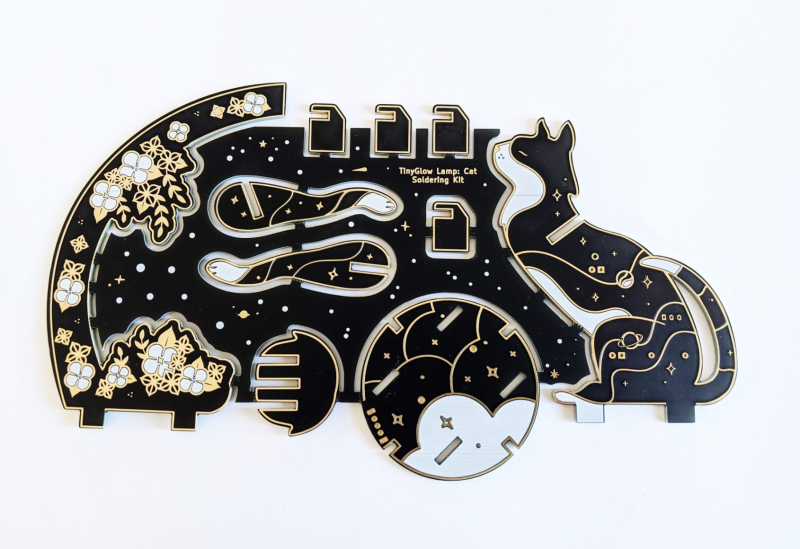
“I was inspired by the #badgelife hashtag, because there are so many solder mask colours that people use around that. The big pinky-white one that they did for the Mr. Robot badge. Those are just fantastic, oh my gosh.
“My expertise is in 3D printing. I did some time doing research on 3D-printed body parts; that’s my main research area. I started getting more and more into electronics, Arduino, and designing my own circuit board – that’s the next thing that you want to be doing. You always want to challenge yourself, and that was the next thing that I wanted to challenge myself to do. It was always on my list of things to try.
“There was way too much trial and error along the way to getting these designs. The most recent design, the cat, took nine iterations to get to this point. The software, in particular, is a lot of work by the time you want to do the art stuff. Lucky for me, learning KiCad, the PCB software, was the last missing piece I had to learn. You have to start off in 3D modelling software to work out how the pieces snap out and fit together in a three-dimensional shape. Then you put all that down and make your edge cuts, then export that from your 3D modelling software into Adobe Illustrator, and work with your artists to make the artwork. You fix that up to make sure it’s circuit board-friendly, then you put that into Inkscape, fiddle around with it even more, then you put it into KiCad. This is the stage where you realise you’ve overlapped your art design with your schematic design. It’s very easy to have to start from scratch in that process all over again, because you realise that things don’t match up. Using the actual circuit board lines as the art lines is something that I can see why nobody else is really doing it, because it’s a huge pain in the arse.
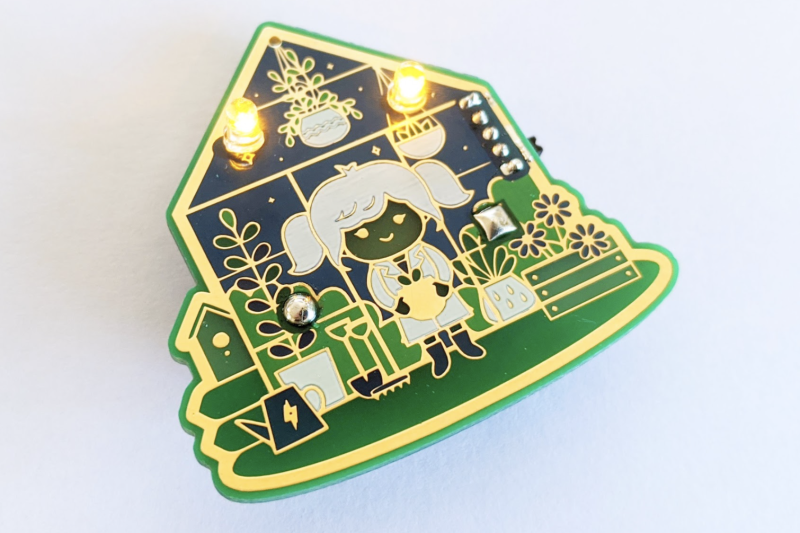
“We’ve had a fantastic response whenever I’ve posted something new on Twitter. I think people really like them because they’re a good example of what STEAM should look like. We see a lot of STEM stuff, the science, technology, engineering, and maths, but we don’t see a lot of STEAM [the A is for Art] stuff being done all that well. I feel like this is one of the few things that hopefully will start to get the message across as to why it’s important to incorporate all those things.
“In terms of the business model itself, not everyone in the mainstream is going to have a soldering iron at home. In terms of scaling up so that you buy kits like this in a shopping centre, we’re certainly not there yet.
“The aim of Elkei Education is to make electronics as least a frustrating process as possible. I get pretty frustrated with some of the stuff that I try and teach and do. Especially with wearable tech – normally, you’d be getting your classic LilyPad stuff, getting your conductive thread out, and hand-stitching it. And by the time you get around to teaching a class full of kids, you soon realise how frustrating hand-sewing is, especially for someone who has not done it before. Especially kids – it is so frustrating trying to get them to put the thread through the needle and then move the needle through the fabric to create the stitch.
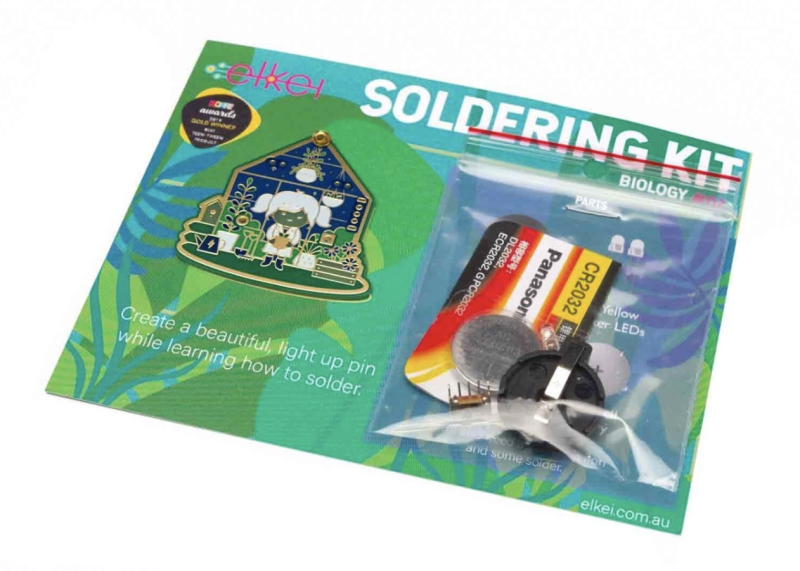
“So, sort of trying to figure out ways to make that process easier and more fun for people is something that we’ve tried to do with one of our current projects. Rather than using conductive thread to do a running stitch, we’re using conductive tape instead: you make a couple of rails with the tape, and then you can just stitch the pieces down without having to stitch in-between them, which makes it a little bit easier, and makes the project easier to scale as well.
“I’m working on a new type of machine-sewable wearable tech board. It has auto-cycling LEDs – they flash through a rainbow sequence without inputting any code. The idea is that you can put down a couple of rails of conductive tape on either side, and once you’ve tested that the circuit works, you can run it straight through a sewing-machine, which you can’t do with any other board at the moment – it’s all hand stitching stuff. I want to get making things real easy to do, and real easy to work with if you’re a wearable tech professional of some kind.
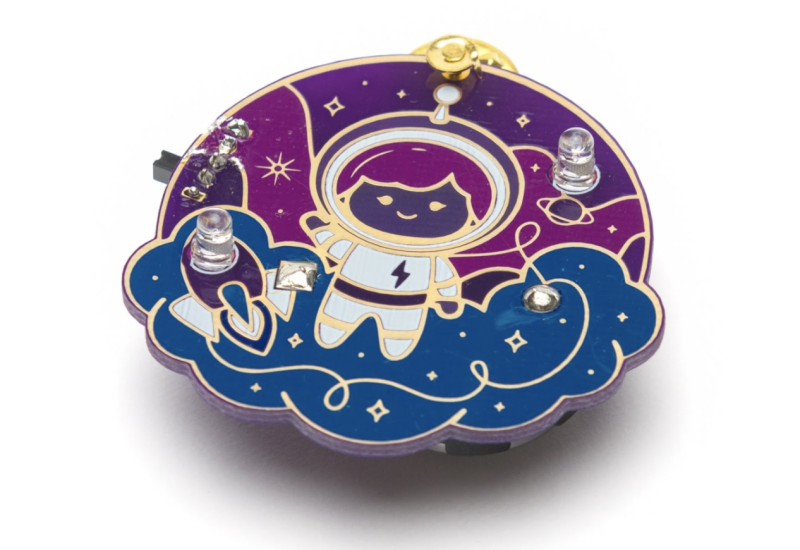
“I absolutely adore all the stuff at the moment that’s coming out from the likes of Lumen Couture. They have pretty much plug-and-play methods of installing heated pads into clothing, soft-touch buttons, lights – it’s so cool; I love it!
“I’ve also got a new type of little coin cell battery holder. It’s got conductive tape-compatible ends, and it also has a little hole for a screw underneath – the idea behind that is that it will comply with Australian product safety guidelines around kids swallowing coin cell batteries. You’ve got to make sure that you can only take out the battery with a tool of some kind, so the child doesn’t have access to it. That’s important if you want to get stuff into schools. You just don’t want to have any of that kind of risk.
“One of our goals is to get 500,000 girls in Australia into STEAM. It’s a lofty goal that we can continue to work towards. I’m not sure if we’ll get there, but we’re sure hoping to. It feels like a slow crawl at times, but we’re getting there.
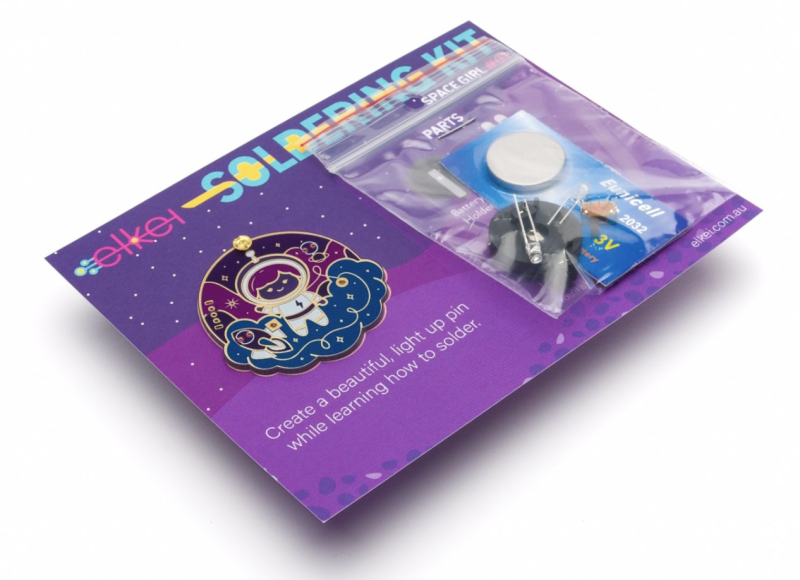
“I don’t get to see much of what goes on in schools; the age group that we work with is university level. I still see so much fear of technology sometimes. People see a 3D printer and are like ‘oh gosh, I could never do anything like that. Put that in the hard basket. Terrifying!’ Where in reality, it takes 15 minutes to put on a print of Baby Yoda, and off you go.
“There’s still so much left to do in this space. It’s so fresh, because there’s this gap of skills. People who are sewing experts aren’t going to be experts at electronics too. It seems really surprising to me that the first person to design a machine-sewable electronics thing is me: it feels weird. Why am I the first person to do this?
“We’re still so early. That’s one of the things I’m really excited about, to keep creating and inspiring others to look at this stuff. I want to make sure that everything I’m doing is as accessible and open as I can make it, because the more people who get involved, the more we’ll be able to do, and the more cool things will happen."






